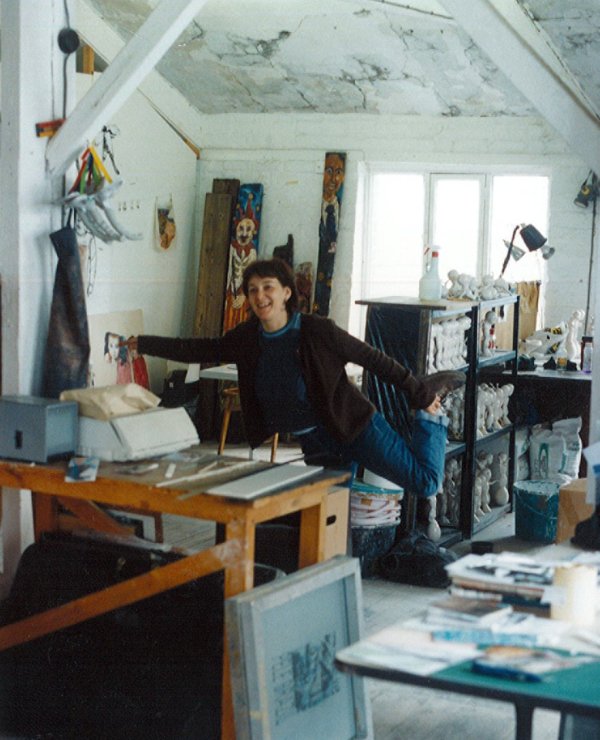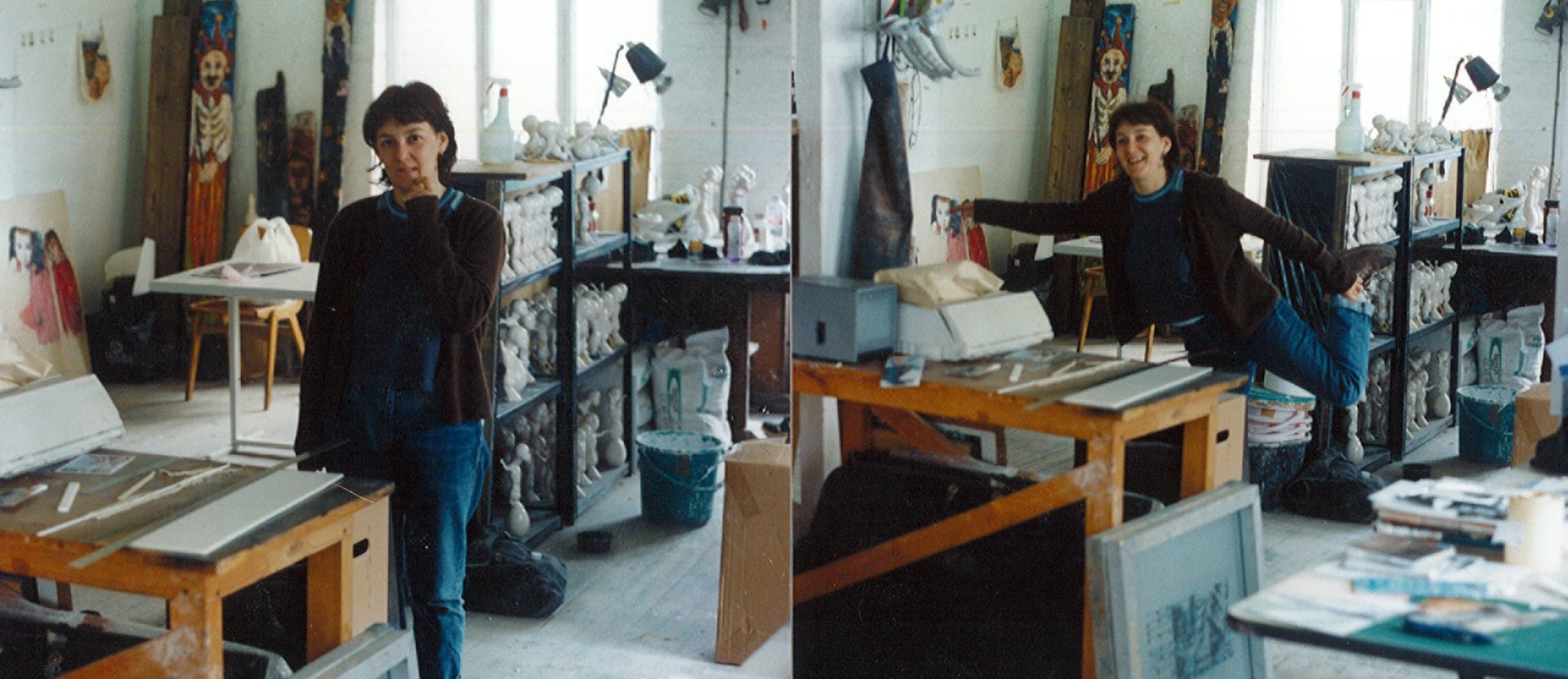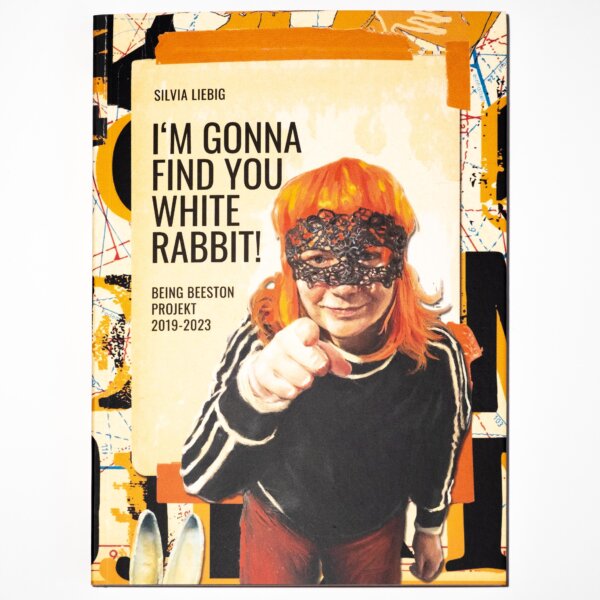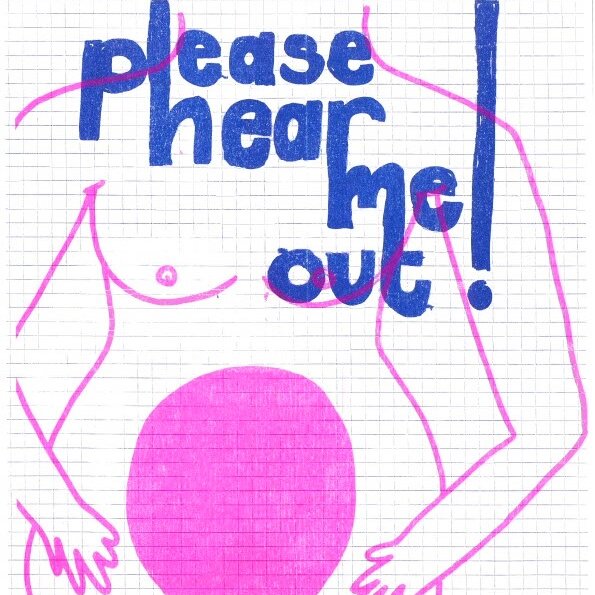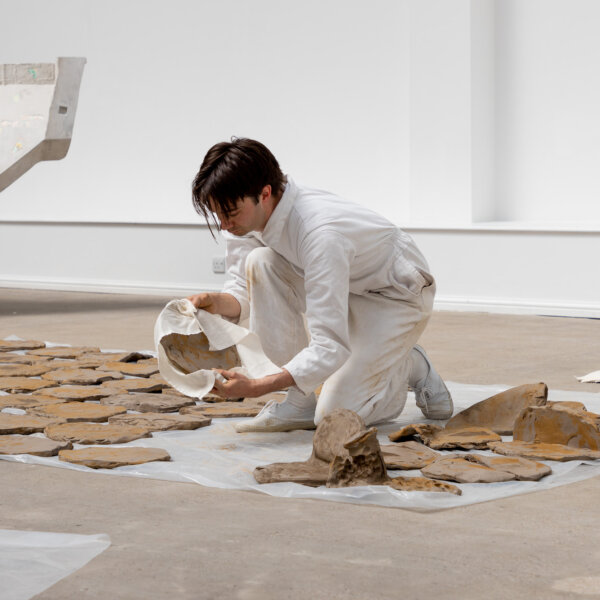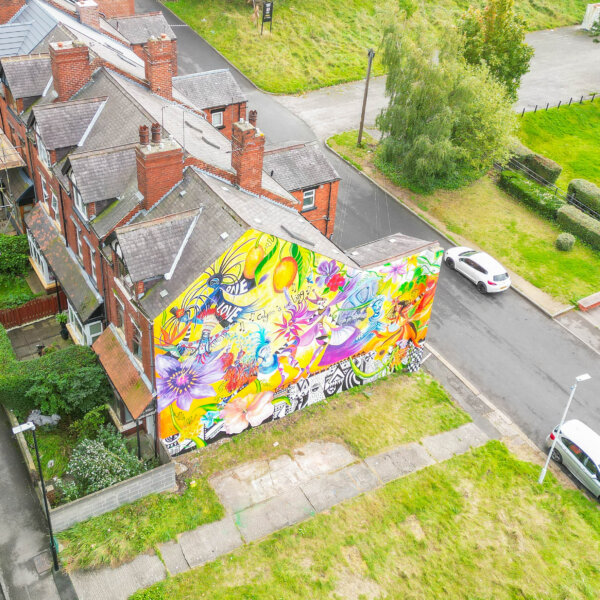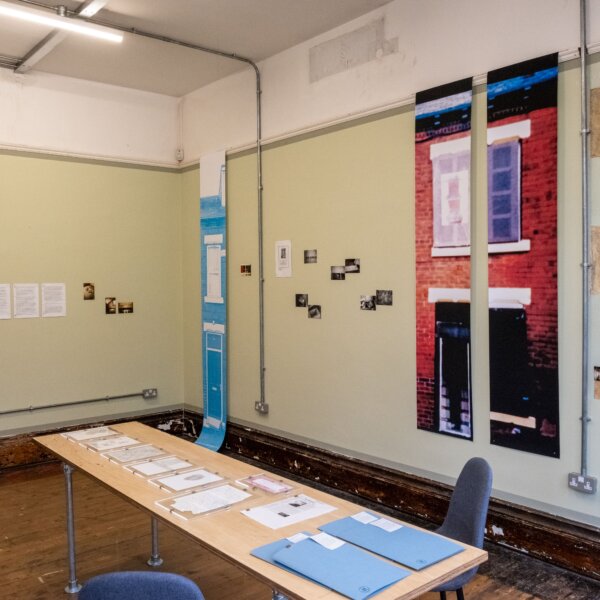Karen Watson, one of two co-founding artistic directors of East Street Arts, has monumentally announced her retirement. The news will undoubtedly invite change for staff, studio holders, and the wider East Street Arts community, not forgetting husband, co-founder and artistic director Jon Wakeman, who remains in post.
Born and raised in Fitzwilliam, a small mining village on the edge of West Yorkshire, Karen was attuned to the socialist values of her community from an early age. Her dad was one of the many miners who paid into a collective that funded local schools, hospitals and even trips to the seaside – an economic and resourceful mindset she would later display in her East Street Arts endeavours. However, she wasn’t the first to curate a space for like minded creatives. Amidst the mass unemployment of Thatcher’s Britain, and in particular mining communities, her parents convinced Wakefield Council to allow them to occupy three empty terraced houses in the neighbouring village of Kinsely. There, they set up a creative hub and drop-in centre for people in need of up-skilling, networking and a place of purpose whilst unemployed.

An artist herself, Karen studied ceramics at South Glamorgan Institute of Higher Education, now Cardiff University. “I could feel my class so much more when I was with them”, explains Karen, as she never felt too far away from an argument with her tutors. She was no more impressed by her peers who didn’t partake in the student union meetings, preaching “You should be a part of it!”, and feeling “quite surprised that people weren’t”. Karen graduated from Cardiff and, after a small stint interrailing around Europe, found herself in Leeds working as a technician in Hornbeam College, Harrogate. It was there that she met (*drum roll*) Jon Wakeman. A few years later, the two were living together in Sunderland, during Jon’s final year of university, but when their friends began to leave, they decided not to stay. “There is an image of me and Jon waving them [their friends] all off in their vans, because we all lived in a particular area on Grey Road, until there was just me and Jon left. We looked at each other and said, ‘Leeds.’”
“What kept attracting me to things was how people were coming together.” The following year, Karen spent her time researching spaces that occupied artists and artistic programming whilst building her network: a repurposed local library (Cardiff), Crescent Arts (Scarborough) and the now online platform a-n (founded in Sunderland) are just a selection of the organisations Karen was inspired by. “a-n was a part of that [journey of discovery] because people came together to make that magazine happen from nothing. Nobody told them to do it, nobody created something and gave them a job, they founded that for themselves and that’s what really interested me – people making things happen from nothing because they think it’s needed, it’s wanted or it seems to fill a gap. That’s when I started to think about, and look at, how people come together collectively.”

Advocating that “…artists deserve warmer, cleaner and more professional spaces”, in 1993, Karen and Jon occupied the third floor of an old mill and founded East Street Arts. “We had no materials, the only thing we did to begin with was outline each studio space in chalk and said that’s your space, this is how much it costs and if you want walls, we’ll help you but, you’ll have to build them.” Having watched other organisations continuously move from one temporary space to another, Karen explained, “I think me and Jon kind of felt if we were going to do something it had to have a legacy, and that legacy had to be something that no matter how long me and Jon stayed involved it would carry on.”
Frequent trips to Europe, including Leeds’ twinned city Dortmund, were invaluable, says Karen, “I think a lot of our learning came from visiting all sorts of spaces in different cities and meeting other artists and hearing about how they did things, it made a massive difference to us.”
One of Karen’s favourite, and most memorable, of East Street Arts’ projects was a series entitled ‘Social Club’ and explored what socially engaged practice was, being a popular term at the time. The original branding for St. Patricks Social Club (now the home of East Street Arts) was used to create an identity for the projects that paid homage to the heritage of the building – a period of time, Karen says, that was rich in output and engagement!
Dutch artist Jeanne Van Heeswijk had a huge impact on Karen, she recalls, early on in their careers. “Not only were we introduced to a digital camera, and a website, during ‘A Christmas Pudding for Henry’ (a 1999 project), Jeanne brought lots of artists together from across the world and encouraged local artists to work together. We were based in Leeds Met Gallery, which doesn’t exist anymore, and we used that space as a base. The first thing Jeanne said was, ‘this isn’t a gallery, this is a living room, this is an office, this is a meeting space’, and just turned it all upside down and said that this is whatever we need it to be. Jon and I really enjoyed seeing live art, visual art, sound art and film in the same place and how artists could work together like that.”

The proceeding years were busy fundraising, managing projects, working with artists, installing, de-installing and navigating the creative process for many artists. However, as the organisation grew, new responsibilities invited new pressures. “Not paying ourselves was ok at the time, and if funding changed then we did less projects, but we now have other livelihoods to think about. It makes a very different role”, says Karen. As the wider team continued their work, supporting artists, it was Karen and Jon’s responsibility to secure the organisation’s future in doing so, which inevitably led to their application for charitable status – a difficult decision, and period Karen remembers as “…it [the organisation] would never go back to what it was and it would never have the freedom that it did”.
“I always felt huge support from our peers in the sector”, says Karen, as she reflects on her time building the organisation and communicating their work to the rest of the world, “…there were people like Dinah Clarke (Leeds City Council) who made a big difference to us and it felt like they cared about us, and cared about what we were trying to do because they knew we were trying to make something happen, supporting visual arts. When we were awarded our first sum of money, Dinah told us to stop existing in the way we were and to pay ourselves.”
Sharing both her personal and professional life with husband, co-founder and artistic director, Jon, was “…hell sometimes and amazing other times”, says Karen. “It has been so much of our lives, and the people we’ve met through it and the artists we’ve worked with… have just been amazing. But, it has been everything.”

Karen concluded by identifying a similarity between her methodology in building East Street Arts and that of the ceramic process. Each stage relying on the success and precision of the previous, right until the end even when a piece is glazed and placed into the kiln looking one way, it can return looking completely different. Karen added, “…or, it can blow up”.
An archive full of long ago letters detail the meeting notes of a then much smaller East Street Arts, and still there are some parallels to today’s discussions: How do we secure funding? What project will run next? And, whose turn it is to buy milk? Over the next couple of months, however, a new question will query the organisation… who could possibly replace Karen Watson?.
Other things!
-
Artists
I'm Gonna Find You White Rabbit! by Silvia Liebig
Silvia Liebig's artist book I'm Gonna Find You White Rabbit!: Being Beeston Projekt 2019-2023 is now available to buy.
-
Event
Reproductive Futures: Creative Workshop
Join artist Herfa Thompson and academic Zoe Tongue to explore your reproductive health experiences, responding to the duo's Reproductive Futures exhibition, in this visual art workshop.
-
News
Welcome to our new trustees
We’re thrilled to welcome two new trustees to our Board following a recent round of open recruitment.
-
News
Artist selected for Taipei artist residency
Leeds-based artist James Thompson has been selected for a sought-after six-week residency at Treasure Hill Artist Village in Taiwan, from August to September 2024.
-
Commission
Making Public Art - a new interview series
We worked with some wonderful artists throughout 2023 to bring large-scale mural pieces to various locations across Leeds. We’ve been catching up with the artists, in a new series that looks at working with communities, sustainability, and their working process in creating public art.
-
Artist support
No Going Back: exploring the archives
Here are some of our favourite images from last month's No Going Back exhibition, for anyone who may have missed it.

